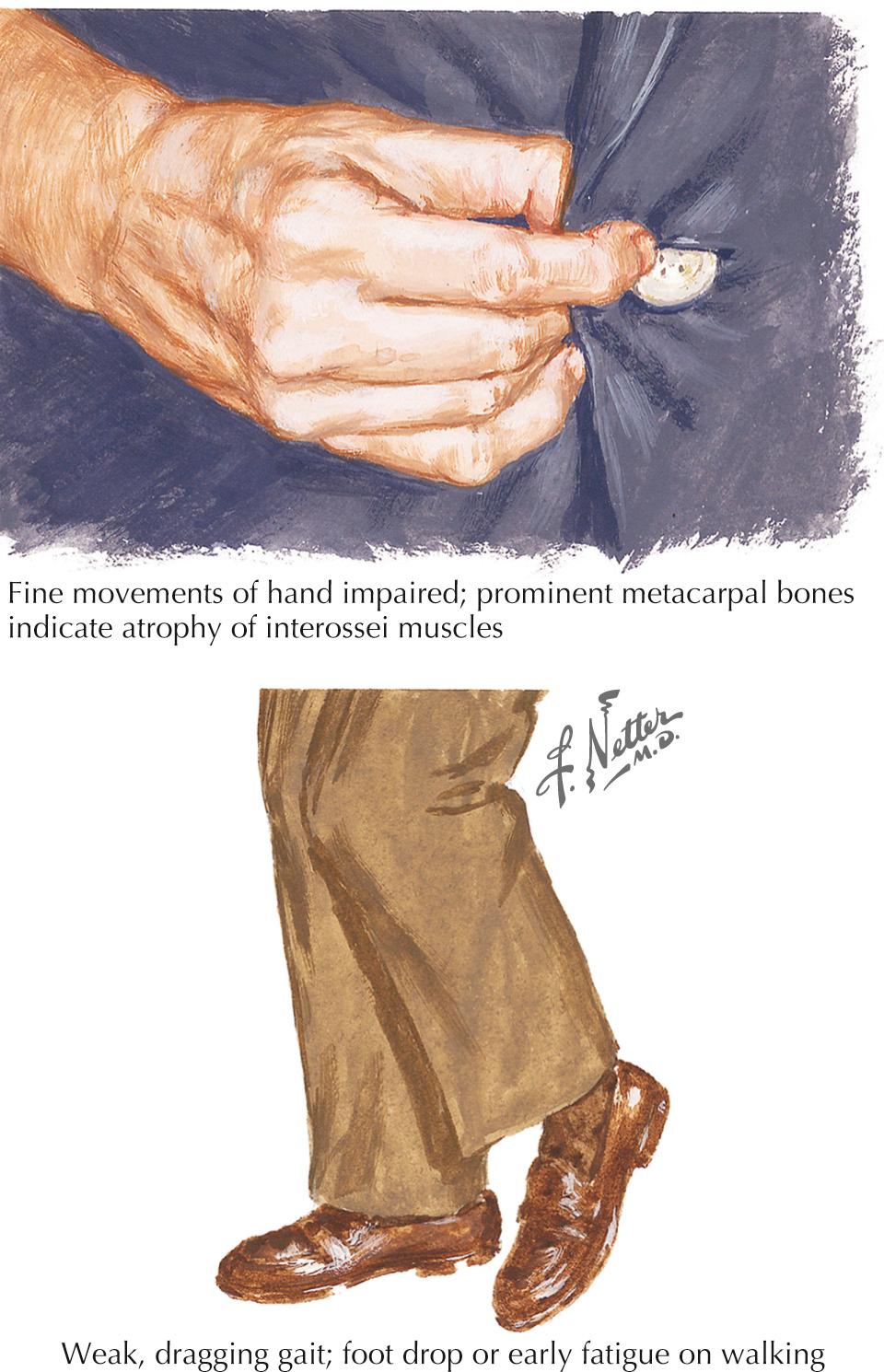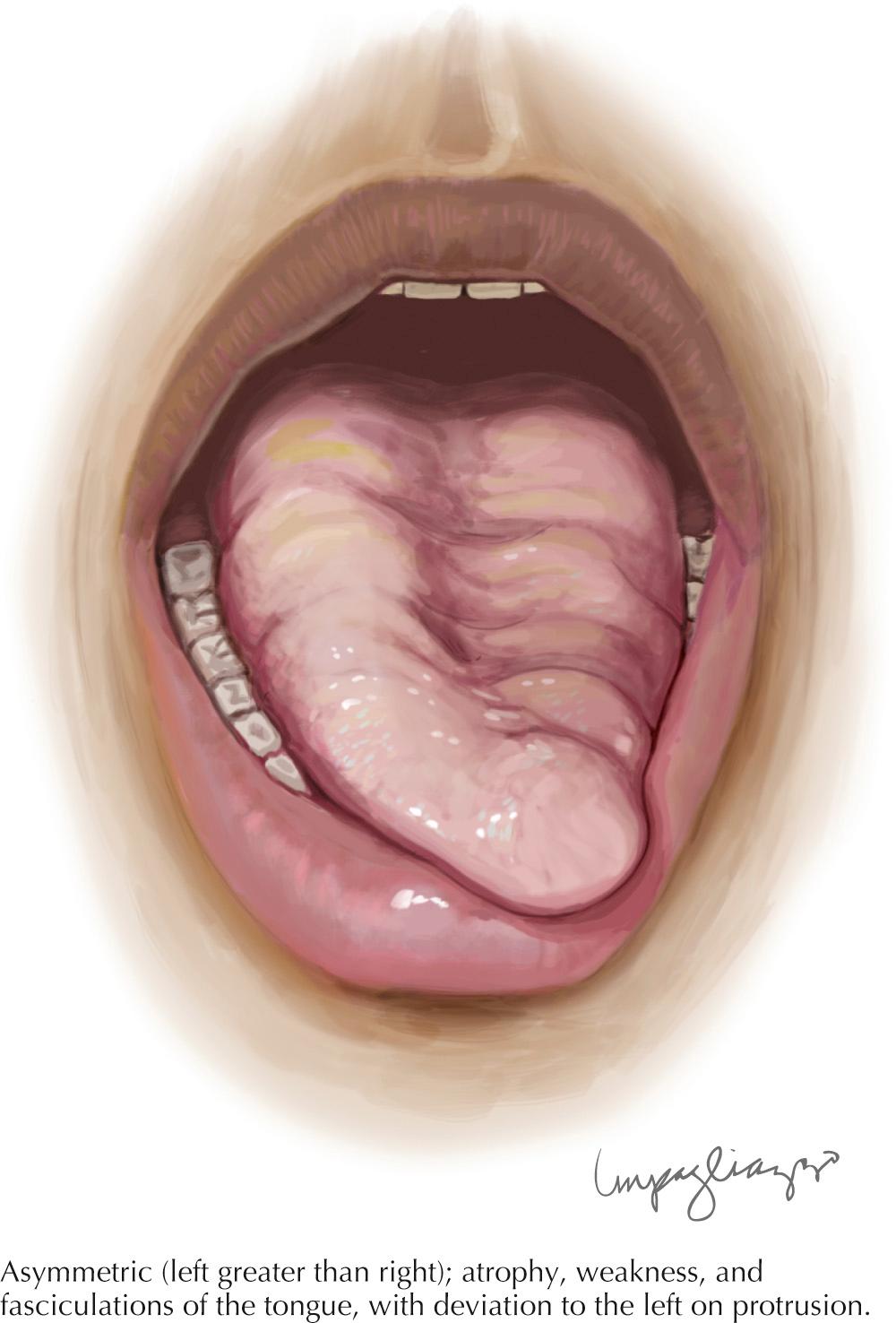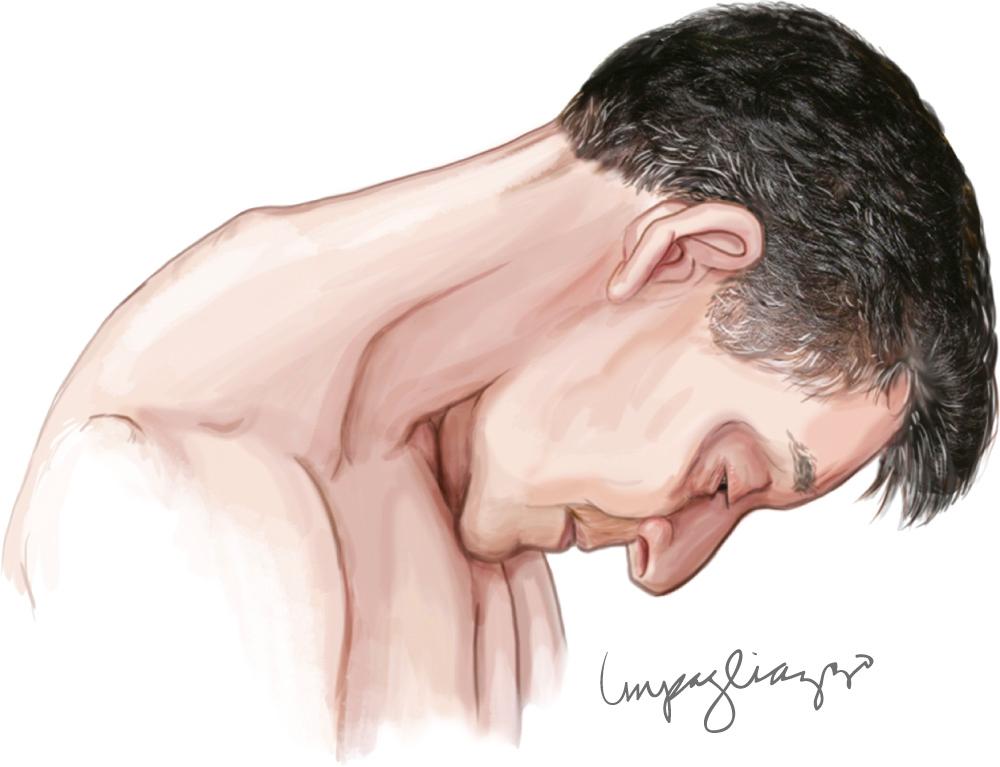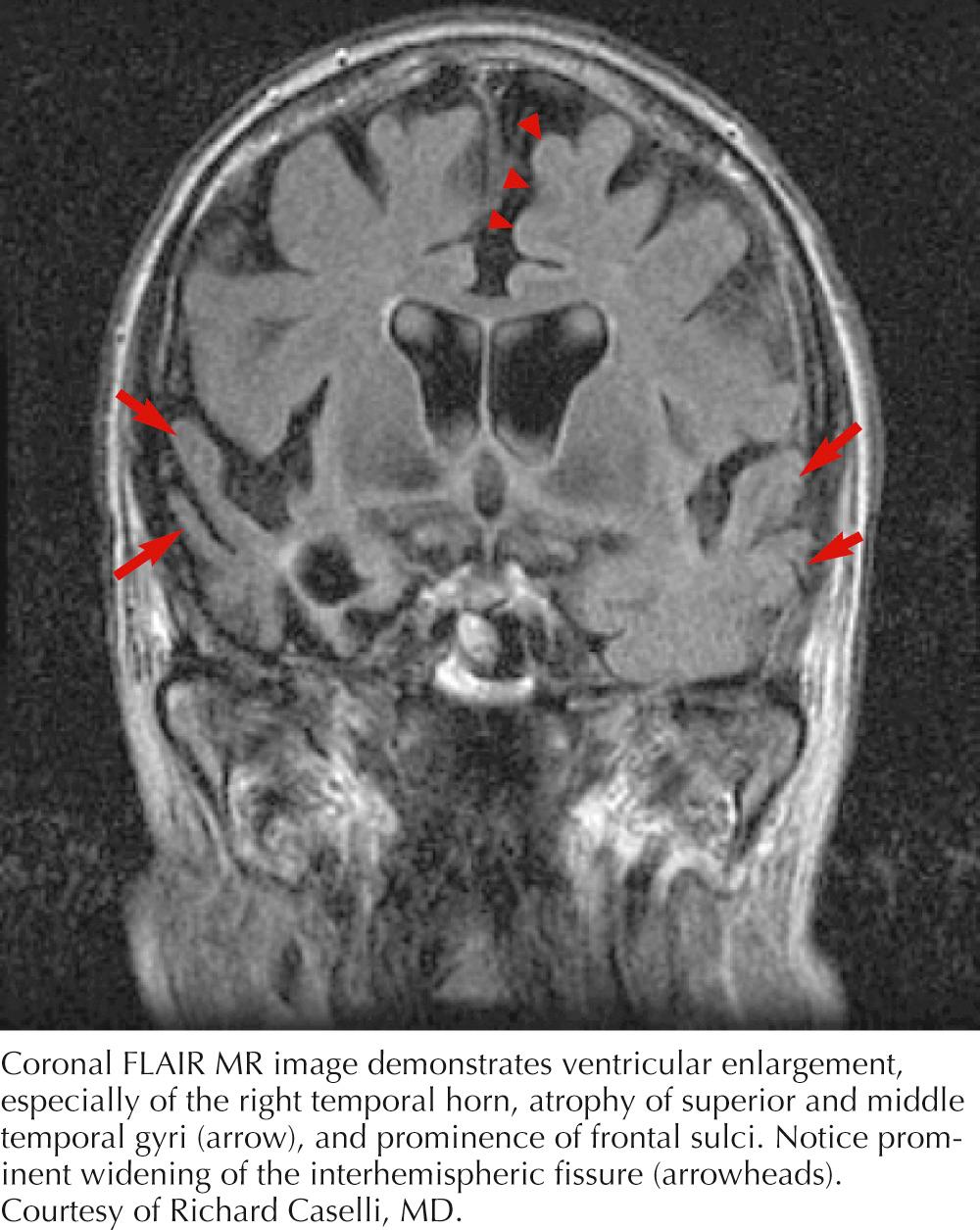Physical Address
304 North Cardinal St.
Dorchester Center, MA 02124
A 54-year-old man reported painless left arm weakness for 6 months. While exercising at the gym, he noticed difficulty lifting weights with his left arm. Progressively he had difficulty cutting food and opening jars with his left hand. He reported cramps in both arms and visible muscle twitching in his left arm and occasionally in other regions of the body. He denied neck pain, numbness, or tingling. His examination revealed normal cognitive function. Mental status and cranial nerves were normal. He was weak in every muscle in his left arm with continuous fasciculations observed in many of these muscles. Reflexes were brisk throughout with a Hoffman sign present on the left.
In 1874, Jean-Martin Charcot described a disorder that he named amyotrophic lateral sclerosis (ALS). In France, it is referred to as Charcot disease, whereas motor neuron disease (MND) is the preferred name for the disorder in the United Kingdom. In the United States, ALS is better known as Lou Gehrig disease.
Charcot described a disorder characterized by loss of voluntary motor function, resulting from degeneration of anterior horn cells, corticospinal tracts, select motor cranial nerve nuclei, and cortical motor neurons ( Figs. 62.1 and 62.2 ). ALS is a sporadic disorder (sALS) of unknown cause in the majority of cases. In approximately 5%–21% of cases, patients have a clear family history and are characterized as having familial ALS (fALS), typically with an autosomal dominant pattern of inheritance. In individual cases, fALS and sALS are phenotypically indistinguishable although the average age of onset in familial cases may be 10 years younger than in sporadic counterparts.
The incidence of ALS approximates 1.8 in 100,000. Men are affected nearly twice as often as women, although this ratio becomes closer to 1 : 1 postmenopause. The median age at onset in sALS is 55 years; however, this disease may afflict patients in their late teens or their 90s. The average life expectancy is between 2 and 3 years; in less than 10% of patients, ventilator-independent survival of less than 1 year or greater than 10 years is seen. Half of the affected individuals die within 3 years and only a quarter survive 5 years without dependency on invasive mechanical ventilation. Young males and patients with restricted upper motor neuron (UMN) or lower motor neuron (LMN) presentations tend to have a slower course. Primary bulbar (disordered speech and swallowing) presentations tend to disproportionately affect older women and appear to have a more rapid course.
In the United States, it is estimated that at any given time 25,000 patients are diagnosed with ALS. The prevalence of ALS appears to be increasing, perhaps because of an aging population. Other than historical observations identifying an increased incidence among inhabitants of Guam and the Kii peninsula of Japan, there does not appear to be any particular geographic location or ethnic group that has a significantly higher risk of developing ALS.
The presenting features of ALS are variable but can be characterized as painless weakness typically presenting focally in limb, bulbar, or axial muscles, and then progressing both within, and outside of the originally involved region. Typically, the patient seeks medical care when his or her weakness begins to affect activities of daily living ( Fig. 62.3 ). It is not uncommon for ALS to be misdiagnosed initially and the time between symptom onset and diagnosis is usually months. Unfortunately, there is a tendency to misdiagnose ALS as a potentially treatable nerve, nerve root, or spinal cord compressive syndrome or orthopedic condition. A significant percentage of ALS patients may undergo unnecessary surgeries. It should be emphasized that progressive weakness and atrophy in the absence of pain and sensory symptoms rarely represent a surgically treatable condition.

The exclusive motor involvement and the chronologic course distinguish ALS from other neurologic diseases. Simultaneous involvement of both UMNs and LMNs and progression both within and outside of the originally involved regions is necessary for a definite clinical diagnosis. LMN involvement may be documented by clinical, electrodiagnostic, or pathologic (muscle biopsy) means, although muscle biopsy is used occasionally. UMN involvement is currently defined by clinical criteria alone. Classic ALS is usually an easy diagnosis for an experienced neurologist. Diagnosis may be delayed in patients with limited clinical evidence of the LMN or UMN component, slow disease progression, and confounding neurologic signs from unrelated problems such as sensory loss from mononeuropathies, radiculopathies, and polyneuropathies.
The signature of anterior horn cell loss is painless weakness and atrophy, hypoactive or absent deep tendon reflexes, and fasciculations. Atrophy is best appreciated when it is focal, in contrast to normal muscle bulk elsewhere. It may be difficult to distinguish atrophy from LMN disease resulting from the atrophy of disuse, particularly in the elderly. Suppressed deep tendon reflexes may also be difficult to interpret as they may represent a normal variant. In ALS, muscle weakness due to LMN dysfunction occurs in a segmental (myotomal) distribution and spreads in a regional fashion. As an example, a patient with ALS and hand weakness may have all hand muscles innervated by C8–T1 roots affected. Weakness occurring in a nerve distribution should lead to consideration of a different disorder (e.g., multifocal motor neuropathy).
Fasciculations seen in many muscles in multiple limbs are ominous and are strongly suggestive of motor neuron disease. Fasciculations that occur infrequently, or repetitively in one spot in one muscle, are more likely to have a benign origin, particularly in the absence of weakness or atrophy. The absence of fasciculations does not eliminate the consideration of ALS. They may not be readily visible because of prominent subcutaneous tissue. Physicians often initially recognize fasciculations, although the patient in retrospect may recall that they were present for some time. Muscle cramping is a common, albeit nonspecific, manifestation of motor neuron disease. The initiation of cramps during manual muscle testing is common in ALS.
What constitutes clinical signs of corticospinal or corticobulbar tract pathology may be more ambiguous. Spasticity represents a definite UMN sign; Babinski signs if unequivocal are confirmatory of UMN disease. Unfortunately, Babinski signs may not be elucidated in many ALS patients as a result of LMN toe extensor weakness. The Hoffman sign is generally indicative of UMN involvement of the arms, particularly if asymmetric. Hyperactive deep tendon reflexes, particularly with sustained clonus, indicate UMN involvement. The term relative UMN sign has been used to describe the preservation of a deep tendon reflex in a weak and atrophic muscle. Reflex spread also implicates UMN disease; finger flexion (C8) occurring in response to brachioradialis tendon percussion (C6) and activation of the contralateral thigh adductors when the insertions of the ipsilateral thigh adductors are percussed (crossed adduction) are two notable examples of this phenomenon. Motor impairment in UMN disease typically results in slowness and incoordination. UMN weakness may occur in a specific pattern: the elbow, wrist, and finger extensors are weaker than their flexor counterparts in the upper extremity; whereas conversely, hip and knee flexors and foot dorsiflexors and evertors are weaker in the lower limb.
Upper motor neuron signs and symptoms in the bulbar region may be more difficult to characterize. The presence of a jaw jerk or snout reflex is considered an indicator of corticobulbar tract dysfunction. An exaggerated gag reflex has a similar implication. One common manifestation of central nervous system involvement in ALS is a pseudobulbar affect; that is, emotional lability with a tendency to readily laugh or cry in the absence of emotion. The pathologic substrate of this phenomenon is not completely understood.
Tongue atrophy, fasciculation, and weakness are perhaps the most frequently occurring and recognized manifestations of LMN involvement of cranial nerves in ALS. It is important to observe for fasciculations when the tongue is relaxed on the floor of the mouth ( Fig. 62.4 ). Tremulousness of the tongue with attempted protrusion may be readily misinterpreted as representing fasciculations. Weakness of both facial and jaw muscles may occur in ALS but they are usually subtle. Weakness of neck extension and neck flexion is common in ALS, and head drop may be a rare presenting feature ( Fig. 62.5 ). Neck drop is commonly associated with posterior neck discomfort and is typically relieved when the neck is supported. Notable for their absence are ptosis and ophthalmoparesis, and symptoms related to sight, hearing, taste, smell, and facial sensation.


Symptoms related to disordered ventilation occur most commonly in the latter stages of ALS but may be the presenting manifestation in approximately 1% of patients. The inability to generate a robust cough, sniff, or sneeze is due to the inability to generate sufficient intrathoracic pressures due to LMN weakness of the internal intercostal or abdominal muscles. Orthopnea implicates diaphragmatic insufficiency due to anterior horn cell disease in the upper segments (C3–C5) of the cervical cord. Paradoxical abdominal movement; that is, outward (rather than the normal inward) movement of the abdominal wall during inspiration, is a helpful clinical sign. Disordered sleep is probably a common manifestation of impaired nocturnal ventilation, and early morning headache may indicate nocturnal carbon dioxide retention.
Ptosis, abnormal extraocular movements, and urinary and rectal incontinence do not typically occur in ALS. ALS patients with UMN-dominant disease may complain of urinary urgency. Traditionally, ALS is considered to be a painless disease. However, discomfort due to impaired mobility, spasticity, and cramping may be prominent. Immobilized upper extremities commonly result in painful adhesive capsulitis of the shoulders. Back or neck pain may occur as a consequence of paraspinal weakness and lack of spine support. Alteration in gait mechanics from leg weakness may put inordinate stress on the back, hips, and knees, potentially exacerbating preexisting degenerative joint disease.
Behavioral and cognitive abnormalities in ALS have been recognized since the 19th century, but may be obscured by dysarthria or blamed on coexisting depression. These cognitive and behavioral changes are associated with preferential pathologic involvement of the frontal and temporal lobes (frontotemporal lobar degeneration [FTLD] resulting in frontotemporal dementia [FTD]). The FTD associated with ALS may precede, coincide, or follow signs and symptoms of motor neuron disease. It may occur in sALS or fALS, and it is now estimated that 20% of ALS patients will fulfill criteria for FTD. The cognitive changes are most prominent in the domain of executive dysfunction and language. Disorganization, impaired planning, mental inflexibility, nonfluent progressive aphasia (word finding), and fluent semantic dementia (word meaning) may dominate the clinical picture. Tests of verbal fluency provide a sensitive screening method. Normal patients should be able to generate at least 11 words in 1 minute in a defined category (e.g., fruits). Behavioral difficulties are typically displayed in social and interpersonal realms. Patients lose the ability to appreciate nonverbal cues as well as the insight to interpret them. Patients may also become withdrawn, disinhibited, and depressed.
The nosology of ALS and related motor neuron disease remains confusing. Progressive bulbar palsy refers to motor neuron disease that initially exclusively affects bulbar function, typically speech and swallowing. Approximately a quarter of ALS patients, often older women, present in this manner. Identifying ALS as the cause of progressive bulbar palsy is made easier when there are notable LMN findings such as tongue atrophy and fasciculations. Conversely, the diagnosis may be rendered difficult when the more difficult to detect UMN findings predominate. Eventually, the vast majority develop limb involvement and unequivocal ALS.
Of the approximately two-thirds of patients who present with limb-onset disease, about one-third will have predominantly LMN features that may be referred to as LMN dominant ALS. Those cases with exclusive LMN signs have been historically referred to as progressive muscular atrophy (PMA). Most lower motor dominant patients will develop UMN features, leaving little doubt that they have ALS. PMA patients typically progress more slowly than ALS and may never develop UMN signs. Some of these patients, usually men, develop profound weakness that is restricted to either the upper or lower extremities for years before progressing to other regions. These syndromes have been referred to as flail limb syndrome or bibrachial amyotrophic diplegia (BAD) and lower extremity amyotrophic diplegia (LAD), respectively. These designations have little practical value other than to alert clinicians that such atypical presentations exist.
At the opposite end of the phenotypic spectrum is the patient with UMN predominant disease. Five percent or less of MND patients will present in this manner. Signs and symptoms typically begin in the legs but may start in the arms or bulbar regions. Exclusive UMN disease has historically been referred to as primary lateral sclerosis (PLS). PLS often has a much more protracted course than typical ALS. Most series report an average life expectancy of 7–14 years. A percentage of patients with PLS eventually develop clinical and electrodiagnostic evidence of LMN disease, and therefore it would be logical to consider PLS as a subtype of ALS until evidence suggests otherwise. PLS patients who devolve into ALS typically do so within 4 years of onset.
The El Escorial criteria were developed in 1990 in El Escorial, Spain, and were modified in 1998 in Airlie House, Virginia, in the United States, in an attempt to develop consensus criteria for the research diagnosis of ALS. Definite diagnosis according to these criteria requires both UMN and LMN clinical findings in three of the four body regions (cranial, cervical, thoracic, and lumbosacral). In addition to a definite ALS category, there are probable, possible, and laboratory-supported probable ALS categories. The former two are based solely on clinical criteria, whereas the latter allows for consideration of electrodiagnostic evidence of denervation as a surrogate for clinical evidence of LMN disease. In most cases, an experienced neurologist will recognize the inevitability of the ALS diagnosis long before these criteria are fulfilled. Further detracting from the sensitivity of the El Escorial criteria is the recognition that a significant portion of ALS patients will succumb to their disease without fulfilling these criteria. Accordingly, the El Escorial criteria appear to be a more useful research than clinical tool.
In 2006, in an effort to diagnose ALS earlier in patients for clinical trial recruitment and potential therapeutic interventions, a third consensus conference of experts in Awaji, Japan, added two major points to the diagnostic criteria. The Awaji criteria propose that fasciculation potentials may serve as a surrogate for fibrillation potentials/positive waves in muscles with chronic motor unit action potential changes in a patient with clinical features of ALS. The diagnostic utility of the Awaji criteria was assessed in retrospective and prospective studies and established to provide an increased or comparable sensitivity. Whether benign versus malignant fasciculations can be distinguished electrodiagnostically and whether fasciculations represent a surrogate marker for ongoing denervation in ALS remain controversial.
The diagnosis of ALS remains a clinical endeavor. Electromyography, nerve conduction studies, and measurements of ventilatory capacity are routinely obtained in ALS suspects. These tests are done to provide diagnostic support for diffuse LMN and ventilatory muscle involvement, respectively. Other testing is done with the primary intent of identifying or excluding differential diagnostic considerations. Genetic testing may provide the opportunity for diagnostic proof in patients with suggestive family histories; the most frequent mutations associated with fALS, superoxide dismutase (SOD1), and c9orf72 are most commonly tested, but panels of genetic testing in ALS are available ( Table 62.1 ). Current practices regarding genetic testing in ALS are variable, perhaps influenced by geography, provider experience, and financial considerations.
| Name | Genetics | Phenotype |
|---|---|---|
| Dominant Inheritance | ||
| ALS1 | 21q22.1 SOD1 |
Adult onset—multiple phenotypes (see Table 62.3 ) |
| ALS3 | 18q21 | Adult onset |
| ALS4 | 9q34 SETX/senataxin |
Juvenile onset Slow progression with distal amyotrophy and UMN signs |
| ALS6 | 16q11.2 FUS-TLS |
Adult onset |
| ALS7 | 20p13 | Adult onset |
| ALS8 | 20q13.3 VAPB/vesicular associated membrane protein |
Adult onset |
| ALS9 | 14q11.2 ANG/angiogenin |
Adult onset |
| ALS10 | 1p36.2 TDP-43/TAR DNA binding |
ALS ± FTD PSP, PD, chorea |
| ALS11 | 6q21 FIG4/polyphosphoinositide phosphatase |
|
| ALS12 | 10p15-p14 OPTN/optineurin |
|
| ALS13 | 12q24 ATXN2/ataxin 2 |
|
| Not designated | 9q21-22 C9ORF72 |
ALS ± FTD |
| Not designated | 9p13.3 VCP/Valsolin-containing protein |
|
| Not designated | 3p11.2 CHMP2B/chromatin-modifying protein 2B |
|
| X-Linked Recessive | ||
| ALSS15 | XP11.21 UBQLN2/ubiquilin 2 |
ALS ± FTD |
| ALS2 | 2q33.1 alsin | Juvenile onset—pseudobulbar and UMN |
| ALS5 | 15q15.1q21.1 | Juvenile onset |
| ALS12 | 10p15-p14 OPTN |
UMN-D Lower extremities |
The cause of sALS is unknown. As with other neurodegenerative diseases, it is hypothesized that ALS may result from the dual insult of genetic susceptibility and environmental injury. Attempts to identify predisposing mutations and potential toxic or infectious agents have been unsuccessful to date. There are many proposed mechanisms for motor neuron death in sALS; these include excitotoxicity secondary to glutamate, free radical-mediated oxidative cytotoxicity, mitochondrial dysfunction, protein aggregation, cytoskeletal abnormalities, aberrant activation of cyclo-oxygenase, impaired axonal transport, activation of inflammatory cascades, and apoptosis. However, why the motor neurons and corticospinal/bulbar tracts are vulnerable in a selective manner, and why the disease begins focally and progresses in a regional fashion, remain unknown.
The role of genetic susceptibility in sALS is not well defined. Phenotypically, sALS and fALS are indistinguishable aside from the earlier age of onset in sporadic disease; both are clinically heterogeneous. Estimates of heritability in sALS are variable, ranging from 5% to 28%. The percentage of genetic variants found in patients with sALS that are actually pathogenic is not well understood. It is possible that certain genetic variants may reduce the risk of ALS in an individual.
fALS accounts for approximately 10% of ALS cases and occurs with different modes of inheritance, although an autosomal dominant pattern is by far the most common. Disease mechanisms in fALS are better characterized than in sALS and this has led to clinical therapeutic trials. A major breakthrough in our understanding of fALS took place in 1991 with the identification of cytosolic copper-zinc SOD1 gene mutations on chromosome 21q22.11. SOD1 is a free radical scavenger, leading to the hypothesis that SOD1-fALS was mediated by free radical toxicity. However, SOD1 knock-out mice with no SOD1 protein do not develop motor neuron disease. In contrast, heterozygote mice become symptomatic and die from a paralyzing disorder. It is thought that SOD1 mutations may injure neurons through conformational changes in the SOD1 protein.
Particularly intriguing has been the recognition of the phenotypic heterogeneity in SOD1 fALS ( Table 62.2 ). About 114 pathologic mutations have been identified within the five exons of the SOD1 gene; each of these mutations may produce a distinct phenotype. The most common mutation found in North America is an alanine for valine (A4V) substitution at codon 4; this typically produces a lower motor neuron dominant phenotype (LMN-D) with a life expectancy approximating 1 year. Table 62.2 summarizes the phenotypic heterogeneity that results from different SOD1 mutations. SOD1 mutations are not fully penetrant. It is estimated that individuals carrying the mutation have an 80% chance of developing disease by age 85 years. SOD1 mutations constitute 20%–25% of all individuals with fALS.
| Phenotype | SOD 1 Mutation |
|---|---|
| Lower motor neuron predominant | A4V, L84V, D101N |
| Upper motor neuron predominant | D90A |
| Slow progression (>10-year survival) | G37R, G41D, G93C, L144S, L144F |
| Fast progression (<2-year survival) | A4T, N86S, L106V, V148G |
| Late onset | G85R, H46R |
| Early onset | G37R, L38V |
| Female predominant | G41D |
| Bulbar onset | V148I |
| Low penetrance | D90A, I113T |
| Posterior column involvement | E100G |
More recently, intronic hexanucleotide repeat mutations of c9orf72 were identified as the most common cause of fALS, accounting for 24% of fALS and 4% of sALS in North America. The discovery of GGGGCC expansions in the c9orf72 gene has transformed our understanding of the disease. Proposed pathogenic mechanisms include loss of function of the c9orf72 protein, and toxic gain of function mechanisms via repeat RNA or from dipeptide repeat proteins (DPRs) produced by repeat associated non-ATG translation. Like the SOD1 model, there has also been translation of this understanding of disease into the development of potential novel therapies.
Known fALS genotypes are listed in Table 62.1 . Some of these mutations produce a predominantly LMN or UMN disorder and more closely resemble the phenotypes of spinal muscular atrophy or hereditary spastic paraparesis, respectively.
Mutations that may produce both a frontotemporal lobar degeneration and motor neuron disease can occur in certain proteins identified to date (e.g., c9orf72, TAR DNA-binding protein 43 [TDP-43], valosin-containing protein [VCP], fusion in sarcoma/translated in liposarcoma [FUS-TLS], and ANG/angiogenin proteins). The discovery of TDP-43 was interesting in that non-amyloid, structurally modified TDP-43 has been recognized as a major constituent of the ubiquitinated inclusions found in cortical neurons of patients with both sporadic FTD (sFTD) and familial FTD (fFTD). C9orf72 is relatively common and accounts for 12% of fFTD and 3% of sFTD. Notably, FTLD does not occur in SOD1 fALS.
ALS is pathologically characterized by loss of myelinated fibers in the corticospinal and corticobulbar pathways (see Fig. 62.2 ) and loss of motor neurons within the anterior horns of the spinal cord and many motor cranial nerve nuclei. Even in individuals in whom UMN or LMN features predominate, pathologic involvement of both systems is seen. Patients with associated FTD have preferential lobar atrophy and neuronal loss from these portions of the brain ( Fig. 62.6 ). As a result of anterior horn cell loss, ventral roots become atrophic in comparison to sparing of their dorsal root counterparts ( Fig. 62.7 ). Anterior horn cell loss occurs within virtually all levels of the spinal cord with selective sparing of the third, fourth, and sixth cranial nerves, and Onuf nucleus within the anterior horn of sacral segments 2–4. There is also cell preservation within the intermediolateral cell columns.


The majority of sALS patients will be found to have ubiquitinated inclusions and Bunina bodies within the central nervous system. The latter are dense granular intracytoplasmic inclusions within motor neurons considered specific for ALS. Additionally in ALS with FTD, spongiform changes of the first and second layers of the frontal cortex have been described.
Become a Clinical Tree membership for Full access and enjoy Unlimited articles
If you are a member. Log in here